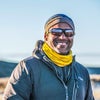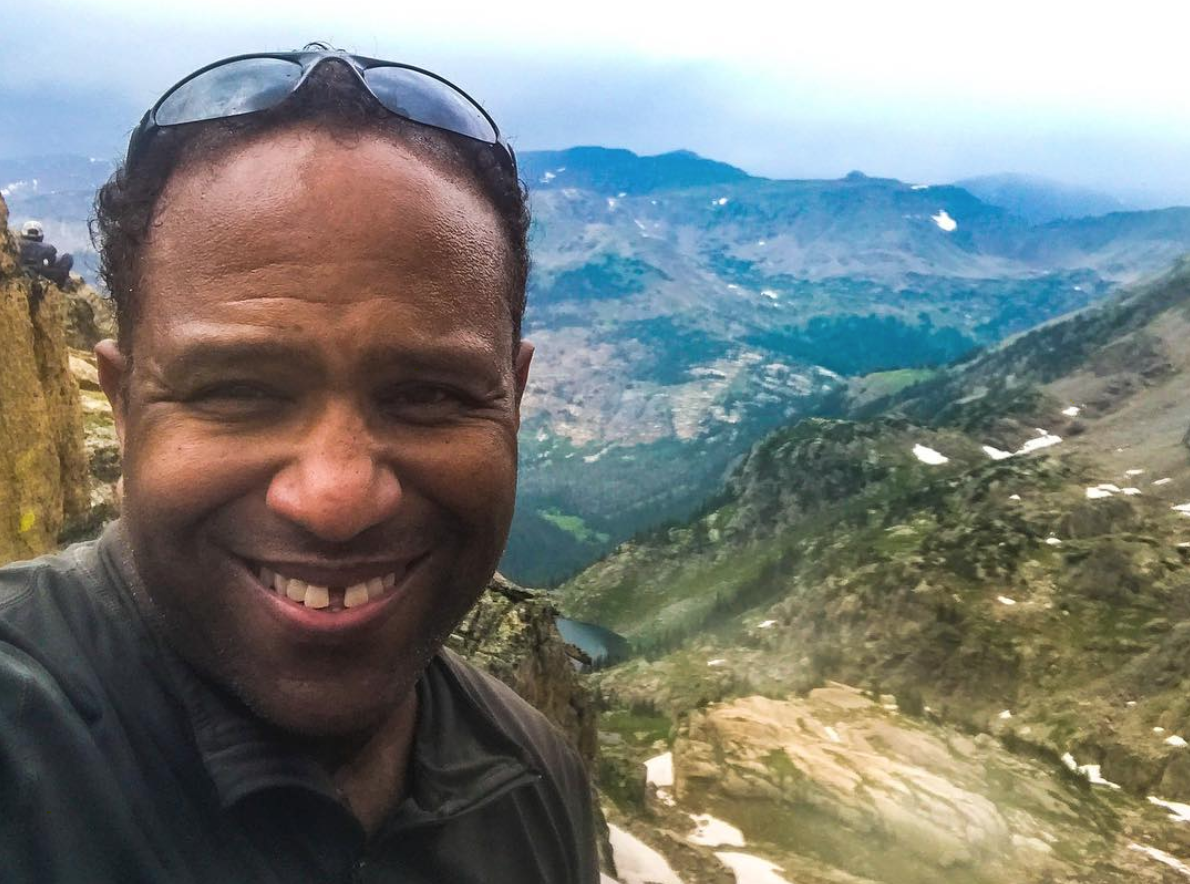In 1992, I was hired as the first black independent sales representative for The North Face (TNF). Back then, TNF was privately owned and headquartered in Berkeley, California. On the way home from my very first sales meeting, I happened to bump into the company president, Bill Werlin, at the United ticket counter at the Oakland Airport.
“He’s with me,” Werlin said to the agent as I handed over my checked bag. In those days it was free. With a few clicks of her keyboard the woman exchanged my coach reservation for an upgraded seat next to my new boss in first class. “Here you go,” she said. “Have a nice flight.”
As a freshly minted junior executive, I was pretty excited to have that kind of one-on-one time with the top of senior management. For almost three hours, as we sipped glasses of white wine paired with rosemary roasted chicken over wild rice, we talked about my plans to sell our products across my six-state territory in the Midwest. He seemed impressed by my apparent lack of fear over meeting a seven-figure sales goal by the end of the year. “I can only imagine what it must be like for you out there,” he said. “I just want you to know I think you’ll do a great job.”
That was pretty much all the encouragement I needed to succeed. I felt like I was part of a great team and I was given every opportunity to grow business for TNF from Chicago to St. Louis, Milwaukee to Minneapolis. But when I started pressing the company to expand its outreach to include people of color, I was met with resistance. By 1993, Bill Werlin had left TNF and would later become the general manager of Patagonia in Japan. Under new management, and in the midst of flagging sales and an impending bankruptcy, the company felt the best strategy was a top-down media campaign to promote its high-profile expeditions on Mount Everest and the many talented, exclusively white, mostly male alpinists who made up the outward face of the company.
At the same time, however, there was also a growing interest in our products among communities of color. I was psyched! Hip hop artists were wearing TNF down jackets with Timberland boots in concerts and in videos on MTV. Black folks were embracing outdoor clothing as high fashion. But at a TNF sales meeting, when I suggested that we reach out to affluent consumers of color, like those who attend the high-energy, mostly black National Brotherhood of Skiers Summits, I was told in no uncertain terms, “James, that’s just not our market.”
Opportunities Ignored, Progress Denied
For the rest of the decade through the end of the 20th century, most companies in the outdoor industry followed TNF’s lead. They followed the money. The North Face emerged from bankruptcy to reaffirm an image of the great outdoors that was affluent, sophisticated, rugged, and incredibly white. Marketing campaigns from companies like Sierra Designs, Mountain Hardwear, Patagonia, Columbia, and Marmot projected this image that was reinforced by the editorial prowess of magazines including ���ϳԹ���, Backpacker, Rock & Ice, and Alpinist. These media messages were virtually devoid of people of color. And though Black and Brown folks were never explicitly discouraged from becoming more active participants in pastimes such as camping, hiking, kayaking, and backcountry skiing, there was really no concerted effort within the outdoor industry to encourage or welcome them to become part of this exciting business. Few senior executives seemed willing to make room in the first-class cabin to bring aboard a new generation of outdoor professionals, many of whom might have been people of color.
That’s why today, as several of these same companies make bold statements to declare their commitment to diversity, equity, and inclusion, I am naturally skeptical.
A Revised History Doomed to Repeat Itself
The recent violent deaths of Ahmaud Arbery, Breonna Taylor, George Floyd, and other Black Americans have compelled many to use their influence to work toward substantive social change. Though I don’t doubt the sincerity of my many friends and colleagues throughout the industry to do the right thing, I wonder if this newfound desire to stand up against racism will truly last.
Recently VF Corporation president Steve Rendle says that at his company, which now owns The North Face, “Racism is not welcome…it never has been and it never will be.” I know from personal experience that statement, at least as far as TNF is concerned, isn’t true. Racism is not limited to acts of physical violence or the segregation of lunch counters and drinking fountains. Racism can also include the failure of a company or an entire industry to create a professional environment in which everyone is welcome and encouraged to participate.
A few days ago, Timberland, another VF Company, re-released an ad from 1993 that affirms its intention to “Give Racism The Boot.” The message shared on social media is an effort to illustrate the shoe brand’s long legacy of social justice. But those of us paying attention at the time may recall that this ad was met with more than a little skepticism. Senior management had freely admitted that it was a naked attempt to reluctantly court an emerging “urban” market of young consumers.
“If you hear that hip-hop kids are wearing Timberland boots and women are wearing Timberland boots with sun dresses at a Donna Karan fashion show, that’s coin in current dollars. But how in the world is that sustainable?” said Jeffrey Swartz, then Timberland’s executive vice president and grandson of the company’s founder, as quoted in the New York Times.
“Mr. Swartz flatly denied any plan to dissociate his company’s name from young, black and Hispanic consumers in America’s inner cities for the sake of the company’s image,” wrote Times reporter Michel Marriott. “In fact, he said he was pleased that a new market had sprung on its own. ‘Their money spends good,’ he says. But he also stressed his position that public taste is fickle and that he was not going to ‘build his business on smoke.’”
This very cynical view of America’s youth culture of 1990s, which was heavily influenced by the rise of hip hop, was common among many outdoor-facing brands. Despite a growing affection among people of color for down, fleece, Gore-Tex and other technical fabrics, the outdoor industry wanted nothing to do with them, except to take their money.
“The youth market came after us,” said Jason Russell, then the director of marketing for Carhartt, to the Times. “’Fine, they like to wear what we make. But we will never go after that market aggressively.’ To do that, Mr. Russell added, ‘we would be walking away from our roots.’”
I’ve been in this business long enough now to see a bit of our history repeating itself. How much of our current interest in diversity, equity, and inclusion is a response to the existential threat of losing a share of a growing market largely comprised of Black and Brown people? Are we truly prepared to deny the white-male-dominated roots for our past to embrace a new demographic of consumers that include the plus sized, the disabled, the indigenous, those who don’t speak English, members of the LGBTQ+ community, and other marginalized people?
If we’re serious about addressing issues of DEI, we must do more than just declare that Black Lives Matter. We have to deliberately and explicitly create opportunities for people from all walks of life to not only succeed in the outdoor industry but to thrive. Each of us must be prepared to make room in the first-class cabin and in the C suites. We might even have to give up our seats. The ride in coach is just as good, as long as we all get to where we’re going together. Otherwise, any efforts to move forward may as well be built on smoke.


